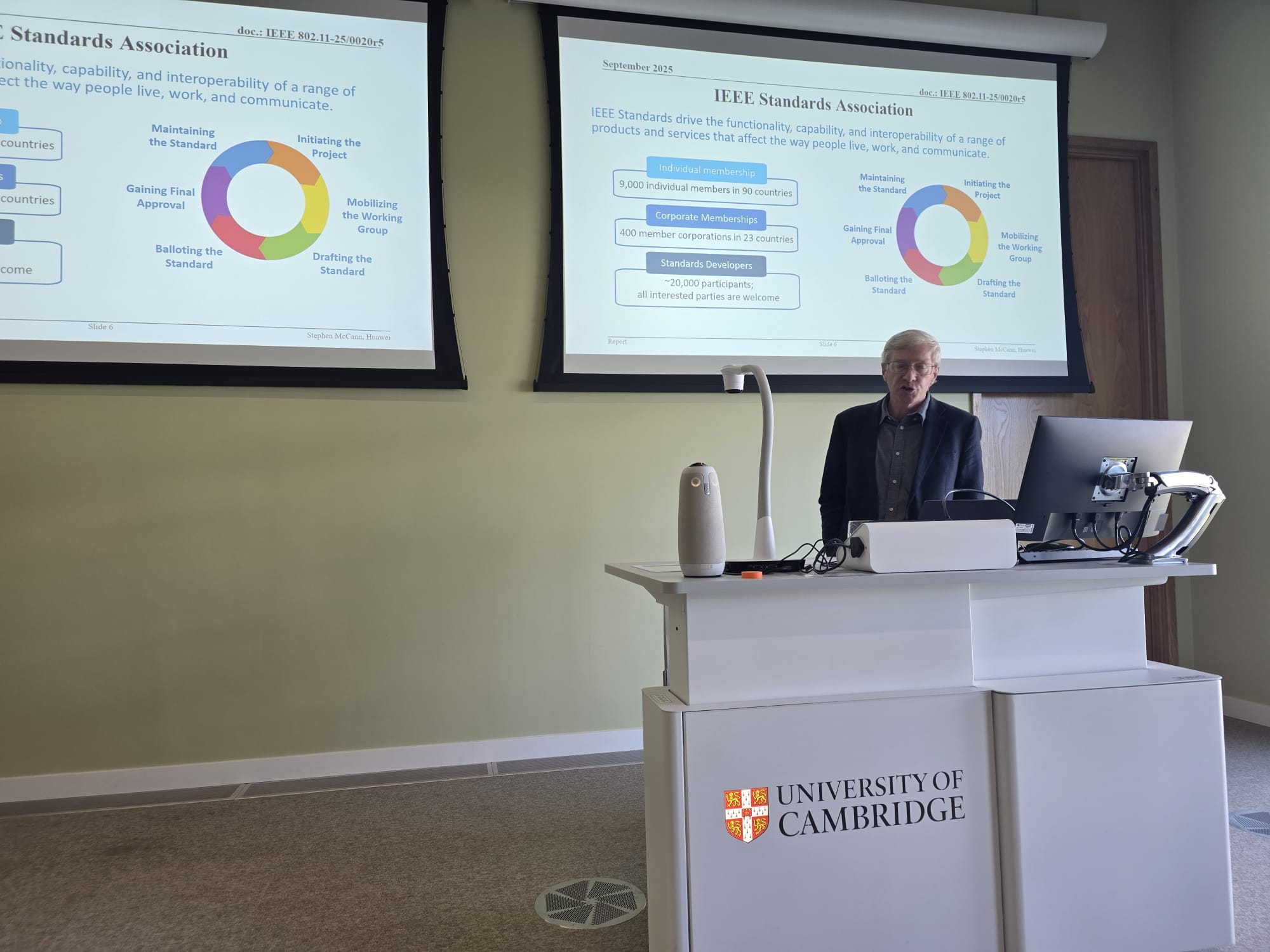IEEE 802.11 July & September 2025 Meetings
The wireless industry continues to move at breakneck speed, with new standards and innovations shaping how people and businesses connect.
FTH Standardisation Director, Dr Nikola Serafimovski, joined experts and organisations from around the world to align on what’s next at the IEEE Wireless Plenary in Madrid at the end of July, and in meetings hosted by FTH at the University of Cambridge in September. Here are the most important technology developments to watch.
Wifi on the Horizon
The eighth generation of Wi-Fi has reached a major milestone. The group responsible for the standard (TGbn) has published a draft for Working Group review – this text is usually sufficiently mature to begin chipset development. Certification efforts are also underway, with a global launch targeted for 2027.
Wi-Fi 8 is not just about faster speeds. It will introduce more reliable connectivity across multiple access points, advanced coordination features, and new sensing capabilities that can detect movement and environment changes. These features promise smarter homes, safer industrial environments, and richer user experiences.
Wireless Sensing Gains Traction
Sensing, although complete as a Task Group (TG), continues to be a topic of interest. Sensing uses wireless signals not only for communication but also to understand the physical environment. Research presented at the plenary sparked strong interest on the possible privacy implications that come with, effectively, ubiquitous sensing. Companies are already exploring how sensing could potentially unlock new applications and markets.
Ambient Power for Devices
Another exciting technology is wireless ambient power. This technology aims to deliver energy directly through wireless networks, reducing the need for traditional batteries. The task group has made significant progress, agreeing on most of the core features of the first draft. While questions remain about how quickly manufacturers will build devices that support it, the potential is huge—imagine sensors, wearables, and other small devices powered entirely by the airwaves around them.
Milimetre Wave and the Road to Wi-Fi 9
Work also continues on using higher-frequency bands, known as millimetre wave (mmWave), to deliver extremely high data rates. The technical discussions are moving quickly, though market adoption is expected to lag until Wi-Fi 9, projected for the end of the decade. Still, multiple organisations are pushing ahead, testing new antenna designs and exploring how to best integrate mmWave (60 GHz) with existing sub-7 GHz systems. Critically, the goal is to provide a completely seamless experience for all users.
Light-Based Communication
Enhanced light communications was also discussed during the meeting, which uses light instead of radio waves for wireless data transfer. Eefforts are being made to align light-based systems with the development of Wi-Fi 8. If successful, this could create new opportunities for ultra-fast and secure communication in specialised environments like hospitals and factories.
Unified Channel Models
Finally, researchers proposed creating a unified way to model wireless channels across different frequency ranges, from traditional Wi-Fi bands to millimetre wave and light. A consistent model would help engineers design, test, and optimise future systems more effectively, accelerating innovation across the industry.
The Road Ahead
Taken together, these developments show an industry balancing short-term realities with long-term breakthroughs. Wi-Fi 8 is nearly ready, with features that will improve everyday connectivity. Sensing and ambient power hint at entirely new use cases. Millimetre wave and light communication look further ahead but could transform wireless capabilities in the next decade.
The message is clear: the wireless future is not only about faster speeds – it’s about smarter, more efficient, and more adaptable networks.




